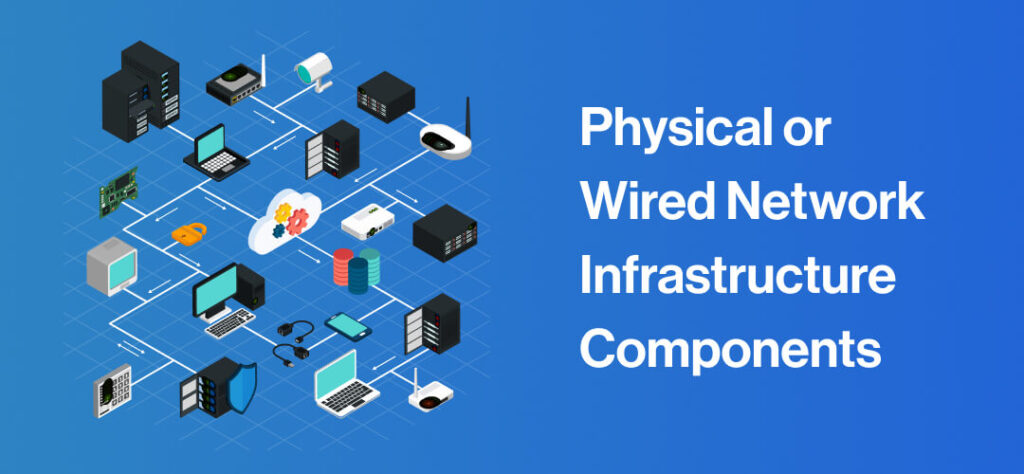Network Infrastructure
Network infrastructure refers to the hardware and software components that enable network connectivity, communication, operations, and management in an enterprise network. It is the backbone that supports the digital activities of an organization, ensuring seamless data flow and connectivity between users, devices, applications, and the internet.

Key Components of Network Infrastructure
- Hardware Components:
- Routers: Direct data packets between networks, determining the best path for data transmission.
- Switches: Connect devices within a network, managing data flow to ensure it reaches the correct destination.
- Hubs: Basic devices that connect multiple Ethernet devices, making them act as a single network segment.
- Repeaters: Extend the range of a network by amplifying the signal.
- Gateways: Serve as a bridge between different networks, translating data from one protocol to another.
- Bridges: Connect and filter traffic between two or more network segments.
- Modems: Convert digital data to analog signals and vice versa for transmission over telephone lines.
- Wireless Router: Provide connectivity through wireless medium to the end devices in the network environment
- Software Components:
- Network Operating Systems (NOS): Manage network resources and provide services such as file sharing, printer access, and user management.
- Network Management Software: Tools for monitoring, managing, and optimizing network performance.
- Security Software: Includes firewalls, antivirus programs, and intrusion detection systems to protect the network from threats.
- Network Services:
- DNS (Domain Name System): Translates domain names into IP addresses, allowing users to access websites using human-readable names.
- DHCP (Dynamic Host Configuration Protocol): Automatically assigns IP addresses to devices on a network.
- VPN (Virtual Private Network): Provides secure remote access to the network over the internet.
- VoIP (Voice over Internet Protocol): Enables voice communication over the internet.
Types of Network Infrastructure
- Wired Networks:
- Use physical cables (e.g., Ethernet) to connect devices.
- Offer high speed and reliability.
- Commonly used in environments where stable and high-speed connections are critical.
- Wireless Networks:
- Use radio waves to connect devices.
- Provide flexibility and mobility, allowing users to connect from anywhere within the network range.
- Essential for supporting hybrid workplaces and remote work environments.
Network infrastructure is a critical component of modern business operations, enabling efficient communication and data exchange. By understanding its key components and best practices, organizations can build robust and secure networks that support their digital transformation efforts and ensure business continuity. At ODN Systems we help to build the customer network environment as per the need to expand or develop the infrastructure which help in achieving the goal of day to day business.


